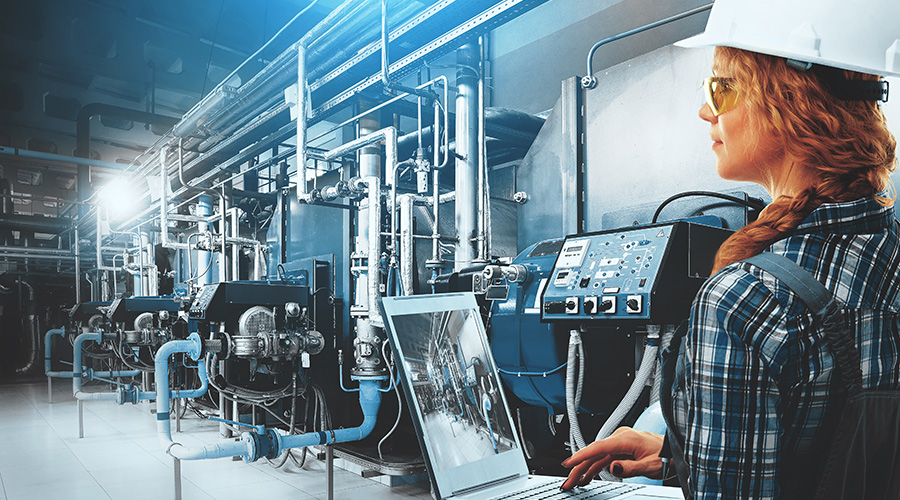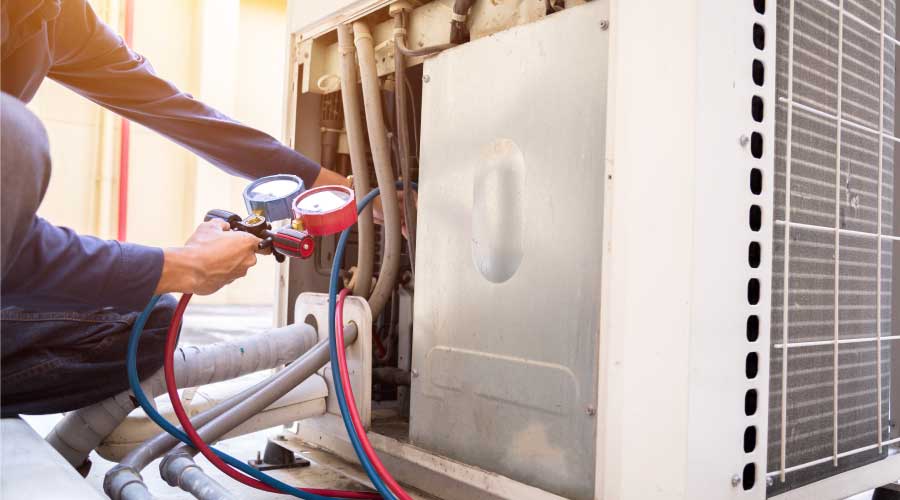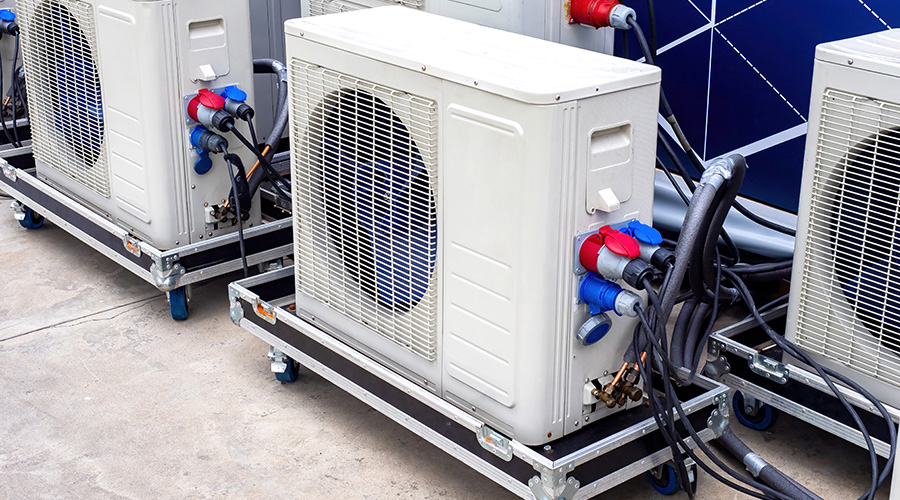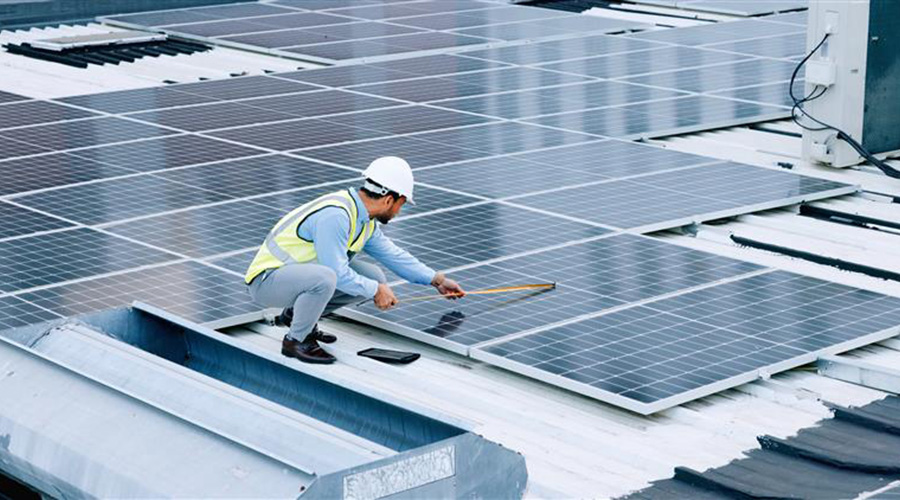Refrigerant, Water, Air Leaks Can All Lead To HVAC Problems
Leaks — of refrigerant, water, or air — can result not only in inefficiencies and higher operating costs, but also in occupant discomfort and the inability of the HVAC system to meet the cooling and heating requirements of a building. Losses due to leaks can be significant and often go unnoticed, especially in a campus distribution scenario, such as a university or airport, where piping is underground and not accessible.
Antiquated, outdated controls can lead to inefficiency and could potentially be the cause of failure, leading to issues with heating, cooling, and ventilation levels. For example, non-operating controls on an economizer or outside air dampers can lead to indoor air quality issues if the dampers are in a permanently closed position. On the other hand, if they are left inoperable and dampers are set in a fully open position, they may tax the capacity of the system during hot summer days or cold winter nights. The solution is to have an operable control system and implement a direct digital control system (DDC) that will allow not only for proper control of systems, but also for optimization, monitoring, and adjustment to stay on track.
Ventilation is a code requirement, and proper ventilation effectiveness, air filtration, and air change rates will result in good indoor air quality. If the lack of proper ventilation is leading to stuffiness, poor air quality, and occupant discomfort, the solution is to increase ventilation to meet code and space function. In addition, implementing proper controls, filtration, and demand control ventilation will save energy while maintaining good indoor environmental quality. This work may also include controls to ensure that outside air dampers are functioning properly and situated in the area of the building optimal for outdoor airflow intake.
Interior controls, such as carbon dioxide sensors, will work hand-in-hand with the dampers. The goal is to bring in only the required amount of outdoor air based on best engineering practices and in accordance with building, mechanical, and energy codes and standards (including these ASHRAE standards: 90.1, Energy Standard for Buildings; 62, Ventilation for Acceptable Indoor Air Quality; and 55, Thermal Environmental Conditions for Human Occupancy). Together, these and other controls will build a smart demand control ventilation system that will significantly reduce CFM expenditure over the previous generation of controls by monitoring the occupancy of each building space to determine its air requirements first.
Deteriorated ductwork and piping insulation is another factor to consider and can provide a low-cost upgrade with a short-term payback. Improper or lack of insulation, along with leaks, can lead to energy loss as well as potential condensation and corrosion of a piping system. In some severe cases, a building can lose between 1 degree and 6 degrees F or from 1 percent to 15 percent of the system's energy when leaks are present and insulation is inadequate on ductwork or piping (for example, for chilled water, heating hot water, and steam).
The building envelope is prone to leaks caused by type of construction, cracks, and exposure to the element. Fixing those problems can work hand-in-hand with HVAC upgrades to make operations more efficient. For example, applying seals to window glazing and sealing large cracks can reduce energy losses caused by infiltration and exfiltration. Whether in hot or cold climates, this infiltration or exfiltration on a less-than-tight construction type building will result in energy losses and discomfort.
Given that the HVAC systems vary from one building to another, any upgrades should be studied and analyzed thoroughly, including life-cycle cost analysis, while considering initial and operational costs and payback. Such analysis will allow the building owner to make informed decisions.
Related Topics:















